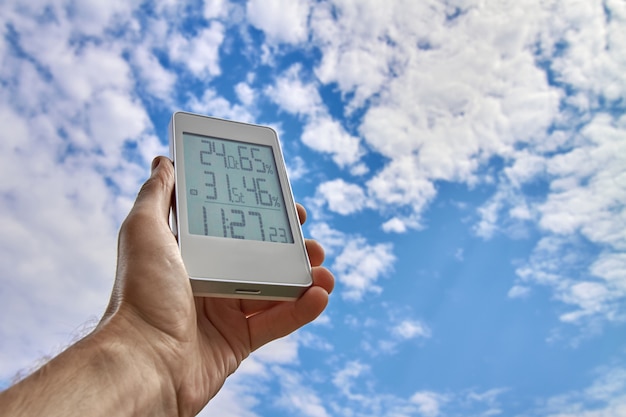Malaysia is characterized by fast urbanization, which brings upon several environmental issues where the quality of air is the major problem. Though, indeed, air pollution is worldwide, Malaysia’s peculiar geology, climatic conditions, and urban development raise these problems differently. On the other hand, improvements in air quality monitoring, more specifically indoor air quality assessment, are found to help Malaysians take better breaths. Understanding these new approaches can empower young people to make informed choices and take proactive steps toward healthier living.
Why Air Quality Monitoring Matters
It would be useful to highlight why Air Quality Monitoring in Malaysia is so important before diving into the latest techniques. Air pollution impacts human health directly, causing respiratory problems, allergies, and heart diseases. Poor air quality affects not only human productivity but also wildlife and ecosystems. Real-time, precise Air Quality Monitoring in Malaysia can act as an early warning system and be crucial in devising improvement strategies.
Innovative Air Quality Monitoring Techniques in Malaysia
- IoT-Enabled Monitoring Devices
The Internet of Things has transformed the concept of air quality monitoring. IoT-enabled devices are capable of measuring real-time pollutant levels and uploading data to some monitoring stations or mobile applications. Some of the devices include sensors for different pollutants such as CO, NO2, SO2, and particulate matter (PM2.5 and PM10). For example, local Malaysian governments put IoT devices in urban areas to advise on the local changes in air quality. In addition to those, cheap Internet of Things-based air sensors will be used by individuals and firms in their homes and businesses. Consequently, IoT devices offer a practical solution that brings air quality awareness closer to everyone’s daily lives. - Drone-Based Monitoring
With technological advancements in drone design, air quality monitoring is taking to the skies. Drones with sensors cover wide areas quickly, making them ideal for monitoring air quality in industrial zones, crowded neighbourhoods, or fire-affected regions. In Malaysia, where forest fires contribute to haze, drones detect pollution sources early, enabling swift and efficient responses.
Drone-based monitoring offers a few additional benefits as well. First, it reduces the need for human presence in hazardous locations. Second, drones can capture data at various altitudes, providing a comprehensive picture of air quality across layers. This innovative technology plays a crucial role in areas that are difficult or dangerous for traditional monitoring teams to access. - Low-Cost Sensor Networks
Malaysia is also investing in low-cost air quality sensor networks that can be distributed across densely populated areas. These low-cost sensors monitor key pollutants, enabling communities to understand the sources of pollution and better advocate for solutions. In Malaysia, several urban areas now have dense sensor networks, each providing localized data that reveal pollution trends. Low-cost sensors are more affordable, allowing for larger deployments compared to expensive air quality stations. As a result, Malaysians now have access to more frequent updates and geographically specific data. - Satellite Imagery and Remote Sensing
Advanced technologies that involve air quality monitoring include satellite imagery and remote sensing, which have allowed countries such as Malaysia to monitor their pollution nationwide. Satellites capture pollution data from space, thus allowing scientists to get a glimpse into sources of pollution, meteorological factors, and transport patterns. They can follow the seasonal trends, and it therefore is not hard to predict air quality management beforehand.
Satellite data is a very useful tool for transboundary pollution, particularly haze from neighbouring countries. Remote sensing can complement the ground-based measurements to ensure active proactive management of air quality in Malaysia - Wearable Air Quality Sensors
Among newer innovative approaches, wearables such as air-quality sensors have become very popular, especially among the youth in Malaysia. Such small, miniaturized devices provide precise, real-time data on the actual quality of the air and help the person to establish at what point in time they need to go outside, wear a mask, or use an air purifier. Wearable air-quality sensors make it quite easy to stay apprised of the changing pollution levels throughout the day. For instance, wearable sensors are a highly sought-after device due to young urbanites’ concern over exposure to pollution and are especially adopted by those who prefer walking, biking, or commuting in areas with heavy volumes of traffic. It indicates personal responsibility and proactive health management through accessible technology.
The Importance of Indoor Air Quality Assessment
While outdoor air pollution often receives more attention, indoor air quality is equally significant. Indoor environments can harbour pollutants like VOCs, CO2, and mould spores, which can affect health, concentration, and well-being. Poor indoor air quality can lead to symptoms like headaches, fatigue, and respiratory issues, and even contribute to long-term conditions.
Indoor air quality assessment is now becoming a priority for Malaysians, especially with the rise of remote work and a focus on wellness. Here’s how indoor air quality assessment is advancing:
- Smart Indoor Air Purifiers
One of the simplest ways to maintain good indoor air quality is through air purifiers. However, today’s smart air purifiers go beyond basic filtration by incorporating air quality sensors that monitor pollutants in real-time. These devices can adjust their settings based on pollution levels, ensuring optimal air quality with minimal energy usage. - Indoor Air Quality Monitors
Portable indoor air quality monitors are becoming popular in homes and offices across Malaysia. These monitors measure CO2, VOCs, temperature, and humidity, offering a snapshot of indoor conditions and helping users identify when ventilation or purification is needed. For young Malaysians, they provide insights into how daily habits—like cooking, cleaning, or using appliances—affect indoor air quality. - Ventilation and Filtration Systems in Public Buildings
Public buildings, such as shopping malls, office complexes, and schools, are now adopting high-quality ventilation and filtration systems. This effort aligns with Malaysia’s improved air quality standards, ensuring that shared spaces maintain healthier air. - Educational Campaigns on Indoor Air Quality
Awareness is crucial to indoor air quality improvement. Health authorities, environmental groups, and educational institutions are running campaigns to teach Malaysians about indoor pollutants and the importance of maintaining air quality at home and work. For instance, informing young adults about the effects of scented candles, aerosols, and furniture materials helps promote healthier indoor spaces.
Simple Steps to Improve Indoor Air Quality in Your Space
Understanding indoor air quality doesn’t stop with assessments. Here are some easy steps anyone can take to improve air quality in their home or workspace:
- Regularly ventilate indoor spaces by opening windows or using fans to let fresh air circulate.
- Invest in houseplants that naturally filter air, like snake plants or spider plants.
- Limit the use of strong-scented products, including air fresheners and cleaning chemicals.
- Choose low-emission furniture and finishes to reduce VOC exposure.
- Clean and vacuum regularly to minimize dust and allergen buildup, especially if you have pets.
Conclusion
Innovative air quality monitoring changes the very face of pollution management in Malaysia with real-time solutions, giving impetus and empowerment to citizens, communities, and authorities alike. From drones and IoT sensors to smart indoor purifiers, this technology heralds healthier living, both inside and out. As awareness picks up, young Malaysians can use these tools better to protect their health and contribute to a cleaner environment so that every breath becomes as refreshing as it should be.






